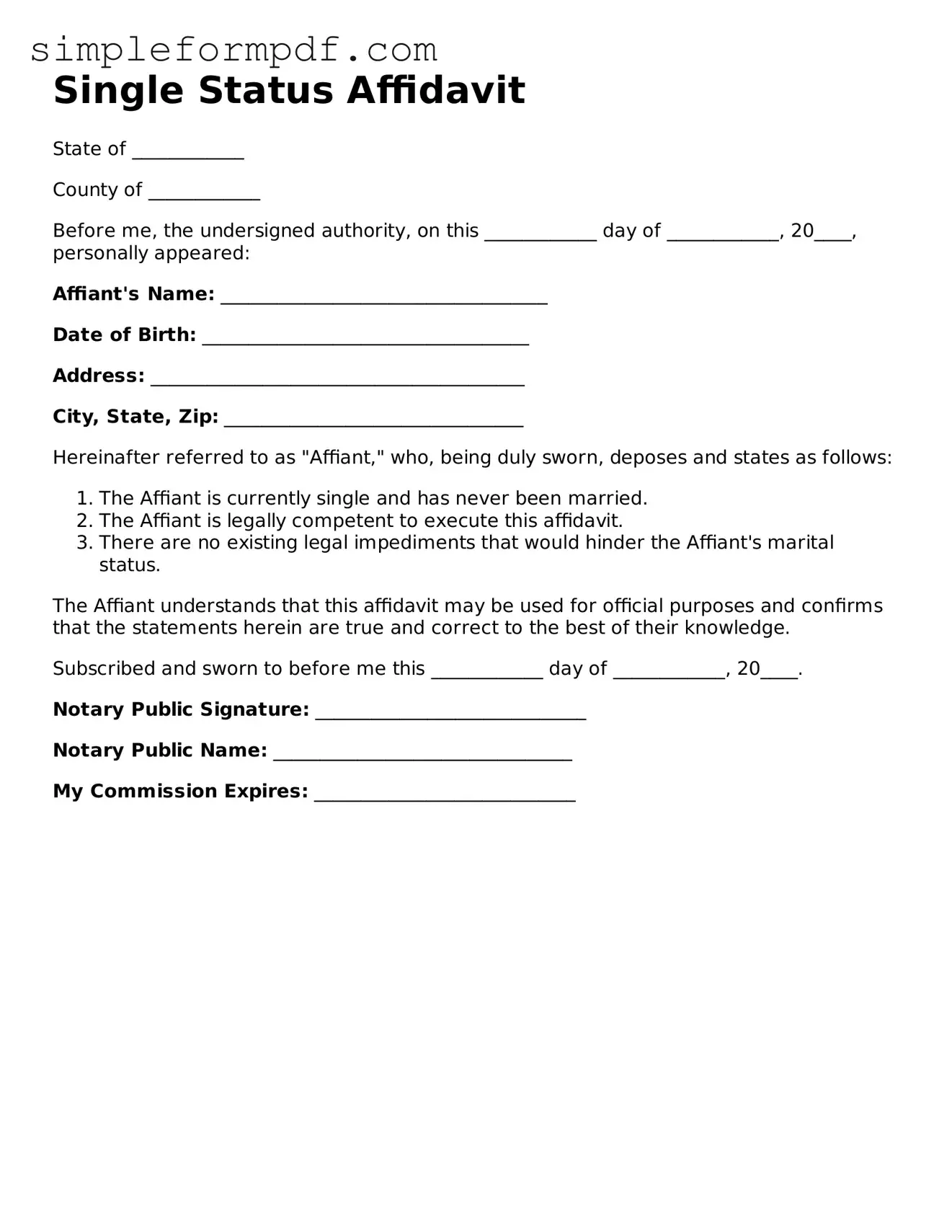Single Status Affidavit
State of ____________
County of ____________
Before me, the undersigned authority, on this ____________ day of ____________, 20____, personally appeared:
Affiant's Name: ___________________________________
Date of Birth: ___________________________________
Address: ________________________________________
City, State, Zip: ________________________________
Hereinafter referred to as "Affiant," who, being duly sworn, deposes and states as follows:
- The Affiant is currently single and has never been married.
- The Affiant is legally competent to execute this affidavit.
- There are no existing legal impediments that would hinder the Affiant's marital status.
The Affiant understands that this affidavit may be used for official purposes and confirms that the statements herein are true and correct to the best of their knowledge.
Subscribed and sworn to before me this ____________ day of ____________, 20____.
Notary Public Signature: _____________________________
Notary Public Name: ________________________________
My Commission Expires: ____________________________
